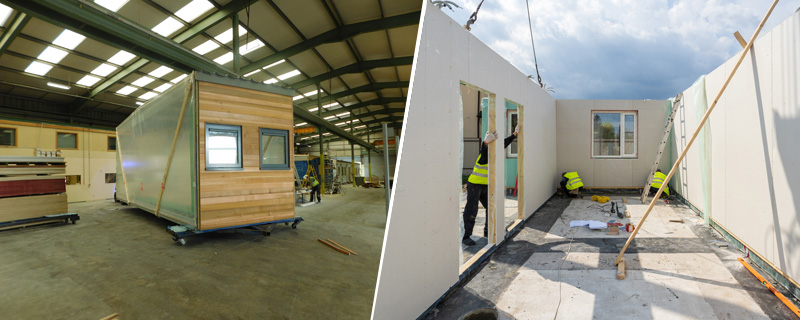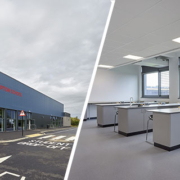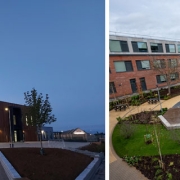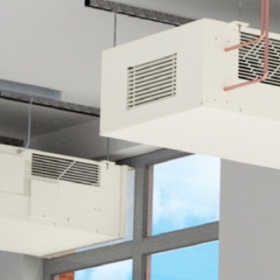Fusing headline performance with massive running cost savings
Frameworks: The answer to procuring for education projects
By Dean Fazackerley, Head of Technical Procurement, LHC Procurement Group (LHC)
Earlier this year, the National Audit Office (NAO) published its damning Condition of School Buildings report revealing that around 700,000 pupils are being taught in schools requiring major rebuilding or refurbishment. It found 38% of England’s 64,000 school buildings are now believed to have surpassed their estimated initial design life and that 572 may contain reinforced autoclaved aerated concrete (RAAC). The NAO’s report also revealed that the Government is spending less than half of the £5.3bn it recommended in 2020 as a minimum requirement for maintaining schools. This is despite claims from the Department for Education (DfE) that since 2015, £13bn has been allocated to improving the condition of school buildings and facilities.
While the Government has commissioned various funding initiatives such as the School Rebuilding Programme, and promised an additional £2bn investment, there is clearly still a considerable amount of work to be done to refurbish our schools.
How frameworks can help with school expansion and refurbishment
Procuring via a framework can be a viable option for large capital education projects, as they take the pressure off in-house teams that are already feeling the squeeze.
They can allow for faster delivery. As suppliers have already been through the statutory periods, schools can use frameworks to speed up the procurement process and better focus on what they need. What is more, frameworks also offer access to a selection of high-quality, pre-approved and pre-assessed contractors. This gives reassurance to clients where resources might not allow them to run this sort of validation process alone. There is also the option of procuring via mini competition or direct award, so frameworks can provide a solution where an urgent requirement necessitates.
Given the widespread discussion around sustainability and creating buildings fit for the future, procurement frameworks can facilitate access to specialist consultants and expertise in carbon net zero building or asset maintenance long-term. They feature pre-approved and vetted high-quality contractors and suppliers offering confidence in the solutions they offer for education building projects.
Through our Public Buildings Construction and Infrastructure (PB3) and Modular Buildings (MB2) frameworks, we are seeing these benefits in action. The former covers the construction of new buildings, extensions and refurbishment of public buildings and infrastructure works, while the latter covers the design, supply and installation of permanent modular buildings, refurbished modular buildings, and the hire of temporary modular buildings for all public buildings including schools and colleges. Both are live until 2025. How Kent County Council is using a procurement framework
Over the past 10 years, the number of children being born in Gravesham has been consistently higher than both Kent and the national average.
The population increase in North Kent has resulted in expansion of nearby primary schools, which is having a knock-on effect on requirements for increased secondary school capacity. Kent County Council (KCC) recognised the need to enhance infrastructure and meet the future needs of local towns and their residents.
A study undertaken in 2019 confirmed there would be significant pressure for Year 7 places in the catchment area of North Kent, so it was critical for KCC to explore potential sites for suitable expansion, in the geographical regions where it was most needed. They therefore decided to expand Meopham School by building a new block. Beyond the buildings
At LHC, we are passionate about improving lives and places through quality procurement solutions and supporting clients to provide as much added value as they can. The work being done by KCC through LHC’s PB3 framework is providing social, economic and environmental value to the Gravesham community. Achieving an expansion in the correct location allows children to learn close to their homes, families, and the community they are most comfortable with. This helps local communities to grow rather than fragment. As a by-product of the extension work, KCC has facilitated pupil construction workshops and apprenticeships for the local community and made charitable donations to aid community and voluntary groups.
Through PB3, the organisation has been able to work with local trades and source materials locally. Further economic benefits are brought about by expanding a school with an already excellent reputation and infrastructure as opposed to building a new one.
Environmentally, the new block has been designed using highly efficient materials and renewable energy and ecological improvements are being made to ensure that existing flora and fauna continue to flourish. Meanwhile, careful thought and consideration went into deciding the location of the expansion to reduce journey times for families. KCC also introduced a purpose-built pick-up/drop-off facility to mitigate traffic and congestion, which has been a major historic problem for the local community. The example given here illustrates the added pressure on local authorities to plan for the demands of a growing population while considering the long-lasting impacts their developments can have. It presents a strong case for using public sector procurement frameworks.
CLICK HERE TO VISIT THE LHC WEBSITE












Leave a Reply
Want to join the discussion?Feel free to contribute!